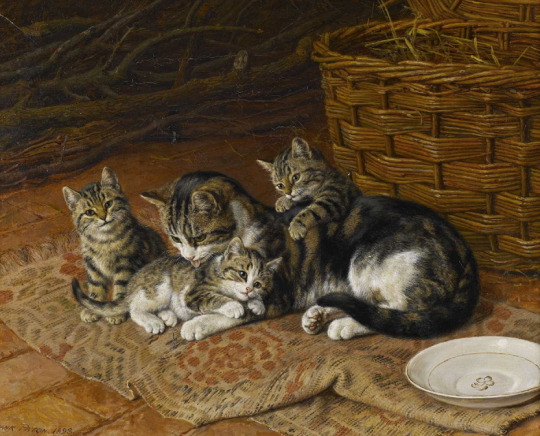#Frank Paton
Text

Frank Paton - Witness my Act and Deed (1882)
136K notes
·
View notes
Text
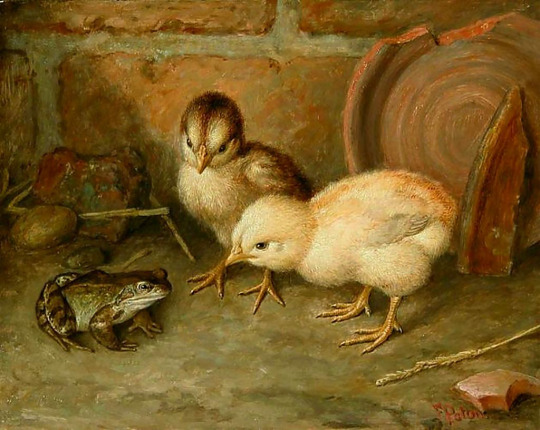
You Are No Chicken. Frank Paton (1856-1909)
via
13K notes
·
View notes
Photo
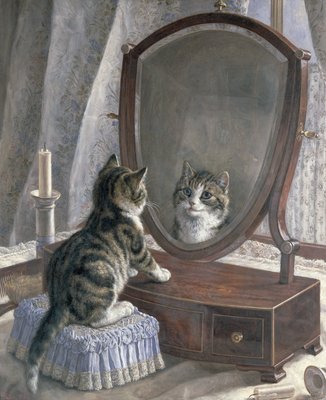
Who's The Fairest of them All by Frank Paton (Öl auf Leinwand)
#art#artwork#kunst#kunstwerk#frank paton#artist#künstler#cat#katze#mirror#spiegel#reflection#reflektion#spiegelbild#candle#kerze#kitten#kätzchen#dressing table#furniture#möbel#room#raum#masterpiece#meisterwerk#famous paintings#oil painting#ölgemälde
56 notes
·
View notes
Photo
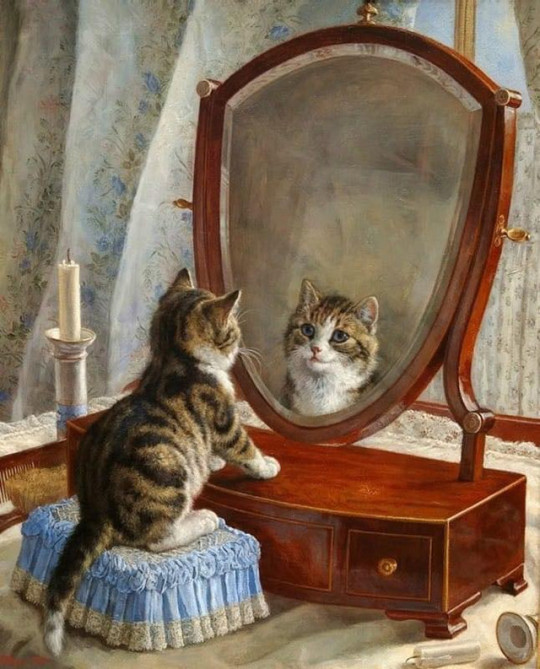
by Frank Paton (1856-1909)
384 notes
·
View notes
Text
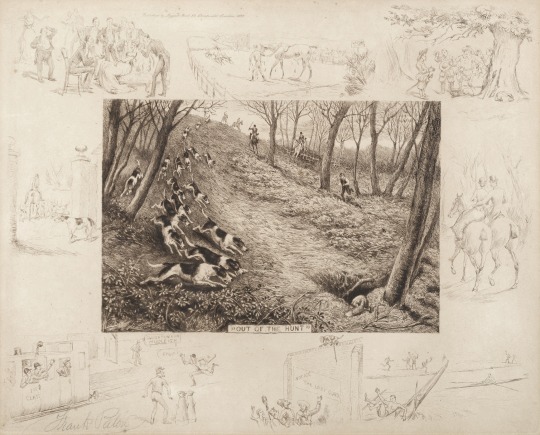

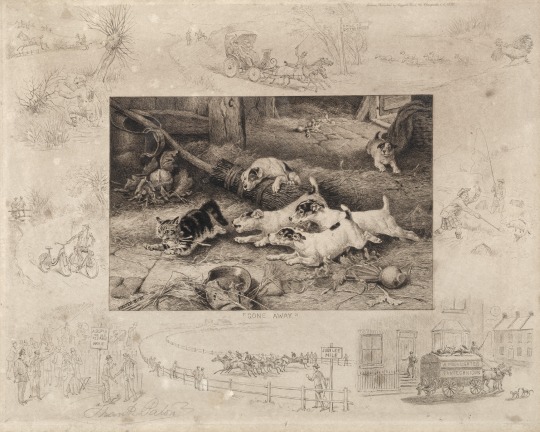



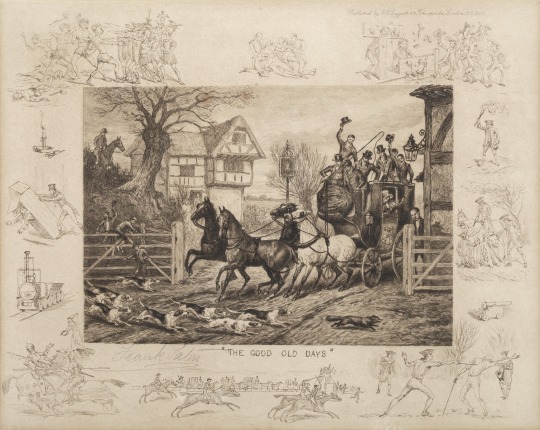
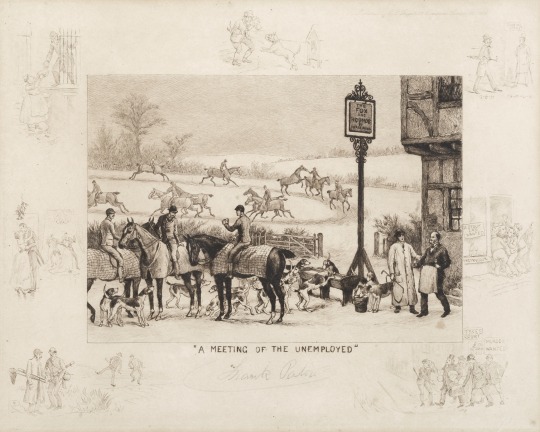
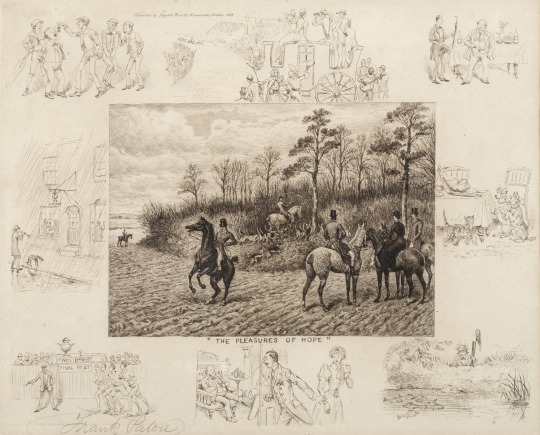
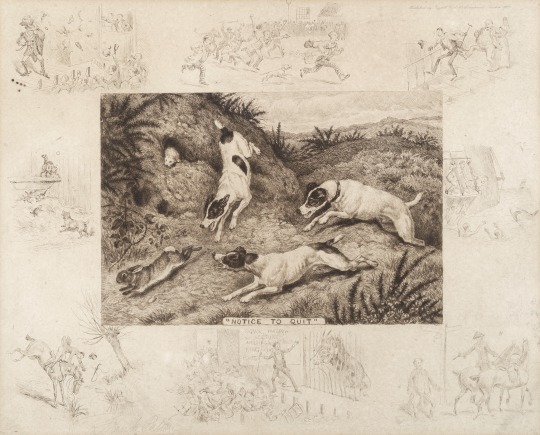
Frank Paton (1856-1909)
Source
“A set of ten etchings complete with a focal subject and surrounded by smaller satirical and comic images in reference to the central title.”
5 notes
·
View notes
Photo

Witness my Act and Deed - Frank Paton - 1883 - via The British Museum
4K notes
·
View notes
Text
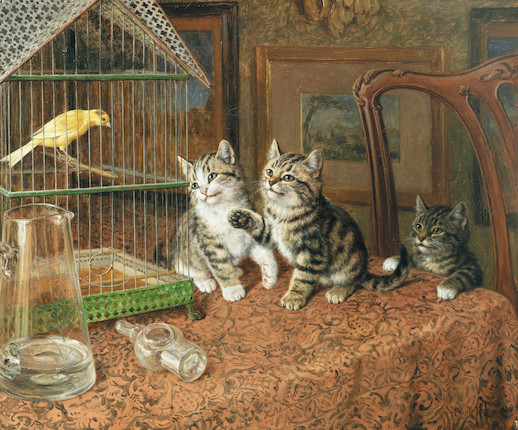
Frank Paton
(1856-1909)
Getting to Know You
Oil on canvas
20 x 24 inches
Signed and dated 1895
#frankpaton#cats#cat#kitten#kittens#bird#friendship#Britishartist#britishart#birdcage#britishvictorianart#academicart#art#arte#painting#artwork#domesticanimals#paintingoftheday#fine art#fineart#work of art#art work
38 notes
·
View notes
Text

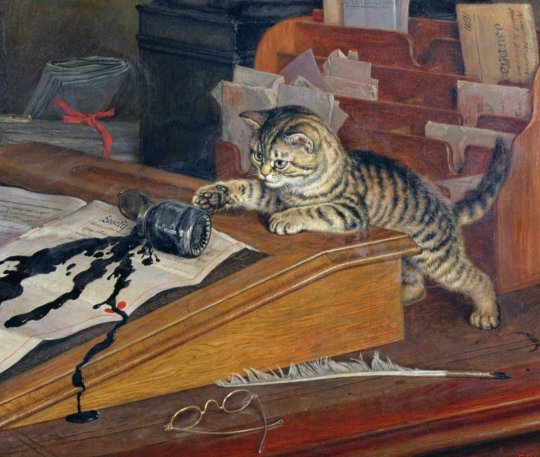
Witness my Act and Deed, Frank Paton. 1882 / George R.R. Martin, Fire & Blood. 2018
40 notes
·
View notes
Text
SAT literature list:
Louisa May Alcott, Little Women
Maya Angelou, I Know Why the Caged Bird Sings
Jane Austen, Pride and Prejudice
Francis Bok, Escape from Slavery
Ray Bradbury, Fahrenheit 451
Charlotte Brontë, Jane Eyre
Anthony Burgess, A Clockwork Orange
Paulo Coelho, The Alchemist
James F. Cooper, The Last of the Mohicans
Daniel Defoe, Robinson Crusoe
Charles Dickens,
— A Tale of Two Cities
— David Copperfield
— Great Expectations
— Hard Times
— Oliver Twist
Arthur Conan Doyle, The Adventures of Sherlock Holmes
Alexandre Dumas, The Count of Monte Cristo
George Eliot, Silas Marner
William Golding, Lord of the Flies
Hermann Hesse, Siddhartha
Victor Hugo, Les Miserables
Aldous Huxley, Brave New World
Ken Kesey, One Flew Over the Cuckoo’s Nest
Sue Monk Kidd, The Secret Life of Bees
John Knowles, A Separate Peace
William Goldman, The Princess Bride
John H. Griffen, Black Like Me
John Hersey, Hiroshima
S.E. Hinton, The Outsiders
John Krakauer, Into the Wild
Harper Lee, To Kill a Mockingbird
Lois Lowry, The Giver
Yann Martell, The Life of Pi
Frank McCourt, Angela’s Ashes
Arthur Miller, The Crucible
George Orwell
— Animal Farm
— 1984
Reginald Rose, Twelve Angry Men
Edmond Rostand, Cyrano de Bergerac
J.D. Salinger, Catcher in the Rye
William Shakespeare
— Julius Caesar
— The Merchant of Venice
— Romeo and Juliet
— The Taming of the Shrew
— The Tempest
— Twelfth Night
Mary Shelley, Frankenstein
Betty Smith, A Tree Grows in Brooklyn
John Steinbeck, The Pearl
Bram Stoker, Dracula
J.R.R. Tolkien, The Hobbit
Mark Twain, The Prince and the Pauper
Jules Verne, 20,000 Leagues Under the Sea
John Wyndham, The Chrysalids
Paul Zindel, The Pigman
Margaret Atwood, The Handmaid’s Tale
Mark Bowden, Blackhawk Down
Emily Brontë, Wuthering Heights
Joseph Conrad, Heart of Darkness
Dante, Inferno
Barbara Ehrenreich, Nickel and Dimed
William Faulkner
— As I Lay Dying
— The Sound and the Fury
F. Scott Fitzgerald, The Great Gatsby
Thomas Hardy, Tess of the d’Urbervilles
Ernest Hemingway, The Sun Also Rises
Joseph Heller, Catch-22
Hendry James
— The Portrait of a Lady
— The Wings of the Dove
Sebastian Junger, A Perfect Storm
Sara Lawrence Lightfoot, Balm in Gilead
Ken Kesey, Sometimes a Great Nation
Niccolo Machiavelli
— The Prince
— Discourses on Livy
Gabriel Garcia Marquez, Love in the Time of Cholera
One Hundred Years of Solitude
Herman Melville, Moby Dick
Toni Morrison, The Bluest Eye
Alan Paton, Cry, the Beloved Country
Robert M. Pirsig, Zen and the Art of Motorcycle Maintenance
Sylvia Plath, The Bell Jar
Ayn Rand
— Anthem
— The Fountainhead
Erich M. Ramarque, All Quiet on the Western Front
Eric Schlosser, Fast Food Nation
William Shakespeare
— Hamlet
— King Lear
— Macbeth
John Steinbeck
— The Acts of King Arthur and His Noble Knights
— The Grapes of Wrath
— Of Mice and Men
Amy Tan, The Joy Luck Club
J.R.R. Tolkien, The Fellowship of the Ring
Alice Walker, The Color Purple
Edith Wharton, The Age of Innocence
T.H. White, The Once and Future King
Oscar Wilde, The Picture of Dorian Gray
Evelyn Waugh, Brideshead Revisited
Richard Wright, Black Boy
Virginia Woolf
— Mrs. Dalloway
— To the Lighthouse
Read.
28 notes
·
View notes
Text
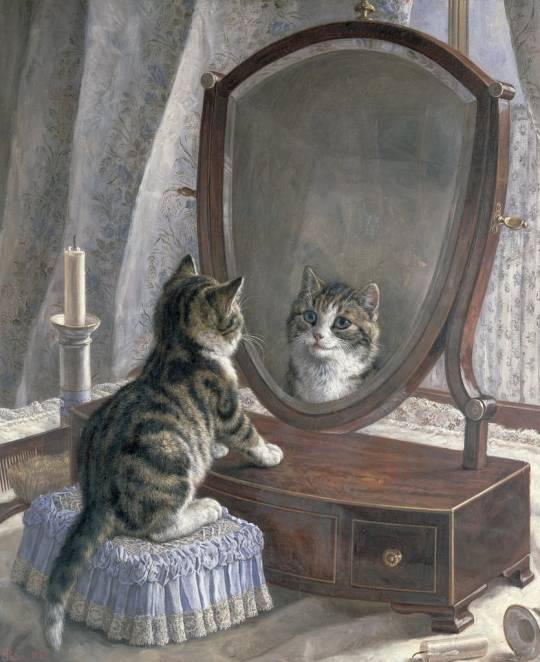
Frank Paton (British, 1856–1909) - Who's The Fairest of them All?
475 notes
·
View notes
Text
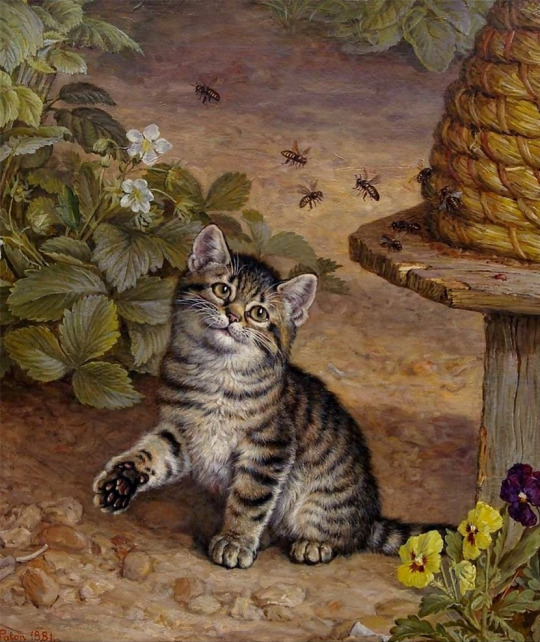
The Folly of Innocence. Frank Paton (1856-1909)
via
1K notes
·
View notes
Text
List of all the books I’ve read
just wanted to keep a list of what I’ve read throughout my life (that I can remember)
Fiction:
“The Outsiders,” SE Hinton
“The Weirdo,” Theodore Taylor
“The Devil’s Arithmetic,” Jane Yolen
“Julie of the Wolves series,” Jean Craighead George
“Soft Rain,” Cornelia Cornelissen
“Island of the Blue Dolphins,” Scott O’Dell
“The Twilight series,” Stephanie Mayer
“To Kill a Mockingbird,” Harper Lee
“Gamer Girl,” Mari Mancusi
“Redwall / Mossflower / Mattimeo / Mariel of Redwall,” Brian Jacques
“1984,” and “Animal Farm,” George Orwell
“Killing Mr. Griffin,” Lois Duncan
“Huckleberry Finn,” Mark Twain
“Rainbow’s End,” Irene Hannon
“Cold Mountain,” Charles Frazier
“Between Shades of Gray,” Ruta Sepetys
“Great Short Works of Edgar Allan Poe,” Edgar Allen Poe
“Lord of the Flies,” William Golding
“The Great Gatsby,” F Scott Fitzgerald
“The Harry Potter series,” JK Rowling
“The Fault in Our Stars,” “Looking for Alaska,” and “Paper Towns,” John Green
“Thirteen Reasons Why,” Jay Asher
“The Hunger Games series,” Suzanne Collins
“The Perks of Being a Wallflower,” Stephen Chbosky
“Fifty Shades of Grey,” EL James
“Speak,” and “Wintergirls,” Laurie Halse Anderson
“The Handmaid’s Tale,” Margaret Atwood
“Mama Day,” Gloria Naylor
“Jane Eyre,” Charlotte Bronte
“Wide Sargasso Sea,” Jean Rhys
“The Haunting of Hill House,” Shirley Jackson
“The Chosen,” Chaim Potok
“Leaves of Grass,” Walt Whitman
“Till We Have Faces,” CS Lewis
“One Foot in Eden,” Ron Rash
“Jim the Boy,” Tony Earley
“The Vanishing Act of Esme Lennox,” Maggie O’Farrell
“A Land More Kind Than Home,” Wiley Cash
“A Parchment of Leaves,” Silas House
“Beowulf,” Seamus Heaney
“The Silence of the Lambs / Red Dragon / Hannibal / Hannibal Rinsing,” Thomas Harris
“Cry the Beloved Country,” Alan Paton
“Moby Dick,” Herman Melville
“The Hobbit / The Lord of the Rings trilogy / The Silmarillion,” JRR Tolkien
“Beren and Luthien,” JRR Tolkien, edited by Christopher Tolkien
“Children of Blood and Bone / Children of Virtue and Vengeance,” Tomi Adeyemi
“Soundless,” Richelle Mead
“The Girl with the Louding Voice,” Abi Dare
“A Song of Ice and Fire series / Fire and Blood,” GRR Martin
“A Separate Peace,” John Knowles
“The Bluest Eye,” and “Beloved,” Toni Morrison
“Brave New World,” Aldous Huxley
“The Giver / Gathering Blue / Messenger / Son,” Lois Lowry
“The Ivory Carver trilogy,” Sue Harrison
“The Grapes of Wrath,” and “Of Mice and Men,” John Steinbeck
“The God of Small Things,” Arundhati Roy
“Fahrenheit 451,” Ray Bradbury
“The Night Circus,” Erin Morgenstern
“Sunflower Dog,” Kevin Winchester
“The Catcher in the Rye,” JD Salinger
“The Absolutely True Diary of a Part-Time Indian,” Sherman Alexie
“The Good Girl,” Mary Kubica
“The Last Unicorn,” Peter S Beagle
“Slaughterhouse Five,” Kurt Vonnegut Jr
“The Joy Luck Club,” Amy Tan
“The Sworn Virgin,” Kristopher Dukes
“The Color Purple,” Alice Walker
“Their Eyes Were Watching God,” Zora Neale Hurston
“The Light Between Oceans,” ML Stedman
“Yellowface,” RF Kuang
“A Flicker in the Dark,” Stacy Willingham
“One Piece Novel: Ace’s Story,” Sho Hinata
Non-fiction:
“Anne Frank: Diary of a Young Girl,” Anne Frank
“Night,” Elie Wiesel
“Invisible Sisters,” Jessica Handler
“I Am Malala,” Malala Yousafzai
“The Interesting Narrative,” Olaudah Equiano
“The Immortal Life of Henrietta Lacks,” Rebecca Skloot
“Incidents in the Life of a Slave Girl,” Harriet Jacobs
“The Princess Diarist,” Carrie Fisher
“Adulting: How to Become a Grown Up in 468 Easy(ish) Steps,” Kelly Williams Brown
“How to Win Friends and Influence People,” Dale Carnegie
“Carrie Fisher: a Life on the Edge,” Sheila Weller
“Make ‘Em Laugh,” Debbie Reynolds and Dorian Hannaway
“How to be an Anti-Racist,” Ibram X Kendi
“Maus,” Art Spiegelman
“I Know Why the Caged Bird Sings,” Maya Angelou
“Wise Gals: the Spies Who Built the CIA and Changed the Future of Espionage,” Nathalia Holt
“Persepolis,” and “Persepolis II,” Marjane Satrapi
“How to Write a Novel,” Manuel Komroff
“The Nazi Genocide of the Roma,” Anton Weiss-Wendt
“Children of the Flames: Dr. Josef Mengele and the Untold Story of the Twins of Auschwitz,” Lucette Matalon Lagnado and Sheila Cohn Dekel
#books#some of these I read for school assignments and some I read of my own volition#some I read when I was a young teenager many years ago and some I read just this past month#somewhat in order of which I read them#some of these I have read more than once#for the record I work at a library which is how I'm able to access so many books#support your local library#also just because I read these books doesn't necessarily mean that I would recommend all of them to just anyone#don't come at me for reading 'problematic' books please#I was an english major in college and didn't get to choose a lot of what I read#but even the ones I was forced to read I'm glad that I read them#I don't really regret reading any of these; even the one's that I didn't like#I will add to the list whenever I finish a book#annemariereads
3 notes
·
View notes
Text
Fidel Castro’s Christmas Eve Toboggan Ride
At the dawn of transatlantic aviation, the Gander Airport could legitimately call itself the ‘crossroads of the world’.
Aircraft travelling between mainland North America and Europe used of the runways of the central Newfoundland town to replenish their fuel.
In the early days of aviation, security wasn’t what it has since become. Passengers were able to leave their planes, explore the airport, and rub shoulders with the people of Gander.
The people of the town got to meet some of most famous and infamous people on the planet.
Royals, rock stars and world leaders were familar faces in Gander. Marlene Dietrich, Humphrey Bogart and Marilyn Monroe spent time in the town and, stories are still told about a time when Frank Sinatra was sent to the back of the line at a local bar.
The Beatles first stop in North America was at Gander, en route to New York and Ed Sullivan’s stage.
For all the celebrity sightings, one stop-over caught people’s attention in a way few others had; on Christmas Eve 1972 Fidel Castro came to town.
Fidel Castro’s Christmas Eve in Gander
Fidel Castro was the longtime political leader of Cuba. He oversaw the transformation of Cuba to the first communist state in the western hemisphere and held power in the nation from 1959 until 2008. As a communist revolutionary, he was often at odds with the United States and much of the western world.
By 1972, little more than a decade had passed since the Bay of Pigs invasion and the Cuban Missle Crisis — Castro was an infamous figure, with world-wide renoun.
On December 24th, 1972 Fidel Castro was leaving Moscow to return to Havana. At the time, an aircraft couldn’t make the flight without a refuelling stop. Castro’s team had selected Montreal.
Mother Nature had other plans.
As Castro’s plane approached Canada, Montreal was bearing down under a blizzard.
The airport closed.
Castro’s crew weighed their options and set their sights on Gander, Newfoundland.
A short while later the Cuban premier touched down in Central Newfoundland.
It was a beautiful day — a postcard-perfect winter wonderland. Gander had just been blanketed by more than 30cm of fresh, white snow.
Castro left his plane and made his way to the airport dining room. It wasn’t long before word spread that an interesting VIP was in town.
Gerald Vokey, who worked for the local newspaper The Gander Beacon, made a request to speak with Castro. Before long the two men were face-to-face in the airport dining room.
Castro answered Vokey’s questions and was curious about Gander.
The two men left the dining room, and stepped outside the airport doors. Castro looked about at the snow-covered evergreens and decided he’d like to see more of the town.
A hasty tour was planned.
Castro and Vokey (along with Beacon photographer, Ian Blackmore) set out to explore Gander, accompanied by Castro’s security and the RCMP.
The motorcade drove through town, stopping at the James Paton Memorial Hospital. Just outside, Castro spotted children playing on a hillside.
Castro was intrigued. He stepped out of his car and joined the children in throwing snowballs. Then, in a move that made the security team nervous, he borrowed a toboggan.
At the top of the hill, Castro climbed on the sled and disappeared down the hill.
It was a successful ride until, near the bottom of the hill, Castro tumbled from the toboggan. His security detail raced toward him, sinking knee-deep into the snow drifts.
They needn’t have worried — he was fine.
Before leaving the hillside, Castro paused to chat with locals and even helped shovel out a car stuck in the snow.
Then almost as quickly as it began, Castro’s winter adventure was over.
The premier headed back to his plane, and barely three hours after arriving in Gander he was gone again.
Some 50-years later, the story of Castro’s toboggan ride remains a popular anecdote in Gander — one people might be inclined to think of as tall tale, were it not for the photos.
Thanks to Gander Beacon photographer, Ian Blackmore the entire incident was documented on film.
You can check out more images at the Gander Airport Historical Society.
Gander and Cuba
Castro stopped in Gander many times over the years, alongside numerous other Cuban, Russian and eastern European citizens.
In the 1980s, Aeroflot (Russia), Cubana (Cuba), and many other airlines from eastern Europe made daily use of Gander as a re-fueling stop when flying to and from the Americas.
Stop-overs at Gander lead the airport to become a destination for potential political refugees. Over the years there were so many defections, locals began to refer to Gander as ‘The Hole in the Iron Curtain.’
1 note
·
View note
Text

"Witness my Act and Deed".
By Frank Paton. British. 1855-1909.
> random-brushstrokes
0 notes
